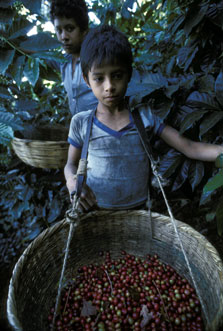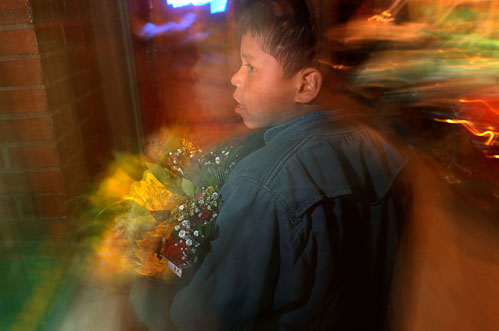There are an estimated 218 million child laborers worldwide. 126 million are in hazardous work, according to the International Labor Organization (ILO).
Child labor is a reality in most countries in the world—even in rich countries like the United States. Often we focus on the obvious visible ways that children work. Other forms remain hidden.
Rural children are routinely engaged in agricultural activities and collecting water, fuel and fodder. In many countries, poor girls work as domestic servants for richer families. Almost everywhere, children, especially girls, perform unpaid work for their families. Work done in the home or in family enterprises is not necessarily easier or more acceptable.
Of great concern are forms of work that are hazardous to the health of children and their families. UNICEF estimates that in Latin America and the Caribbean 17. 4 million children work. These working children make up 16 per cent of the children in the region. Many of them are exposed to environmental hazards, toxic materials or dangerous equipment in the course of supporting themselves and their families.
Some children even work as slaves. A United Nations study in 1998 estimated there are 300,000 such children – known as restaveks, working in Haiti. Like slavery the restavek system stresses ownership of the person. Because the children are seen more as property than as child laborers they can be mistreated and even beaten to death without intervention of the authorities.
There is a difference between child work and child labor. Participation in economic activity that does not interfere with education, health or development can be positive for children. Under the International Labor Organization convention 138, light work of this kind is permissible for children over the age of 12.
Child Labor is defined more narrowly. Any work done by children younger than 12 is considered exploitative. Any work that harms a child’s health, or mental, physical and emotional development and work that interferes with education is also considered exploitative.
Links:
- More Information: UNICEF’s State of the World’s Children 2009
- Be informed: Hazardous child labor
- Activism: End Child Labor

